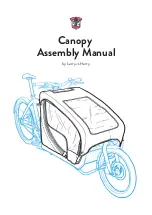
ENGLISH
OWNER’S MANUAL 2021
| ROAD BIKE
| 50
b
c
a
BRAKES
Brakes
(a)
are used for adjusting one’s speed to the surrounding terrain and
traffic. In an emergency situation, the brakes must bring your SCOTT bike to a
halt as quickly as possible.
In the event of such emergency brakings, the rider’s weight shifts forward
abruptly, thus reducing the load on the rear wheel. The rate of deceleration is
primarily limited by the danger of the rear wheel losing contact with the ground
(b)
, resulting in an overturning of the SCOTT bike and, secondly, by the grip of
the tyres on the road. Such a problem becomes particularly acute when riding
downhill. Therefore, in case of an emergency braking you should try to shift
your weight towards the rear and the ground as far as possible.
Actuate both brakes simultaneously
(c)
and bear in mind that, due to the weight
transfer, the front brakes can generate a far better braking effect on a surface
with good grip.
Make yourself familiar with the operation before you set off for the first time.
Practise braking on different kinds of surfaces in an area free of traffic.
Wet weather reduces the braking power. Actuate the brakes carefully when
riding on wet or slippery ground, as the tyres can easily slip away. Therefore,
reduce your speed when riding in such conditions.
There are various types of brake systems that may be subject to the following
problems:
Too long braking or brake dragging can result in an overheating of the
rim
brakes.
This can damage the inner tube or make the tyre slip on the rim causing
a sudden loss of air which could lead to a serious accident in the process.
With
disc brakes
(d)
prolonged braking or permanent dragging of brake pads
can lead to an overheating of the brake system. This can result in a reduction of
the braking power or brake failure. Risk of accident!
















































